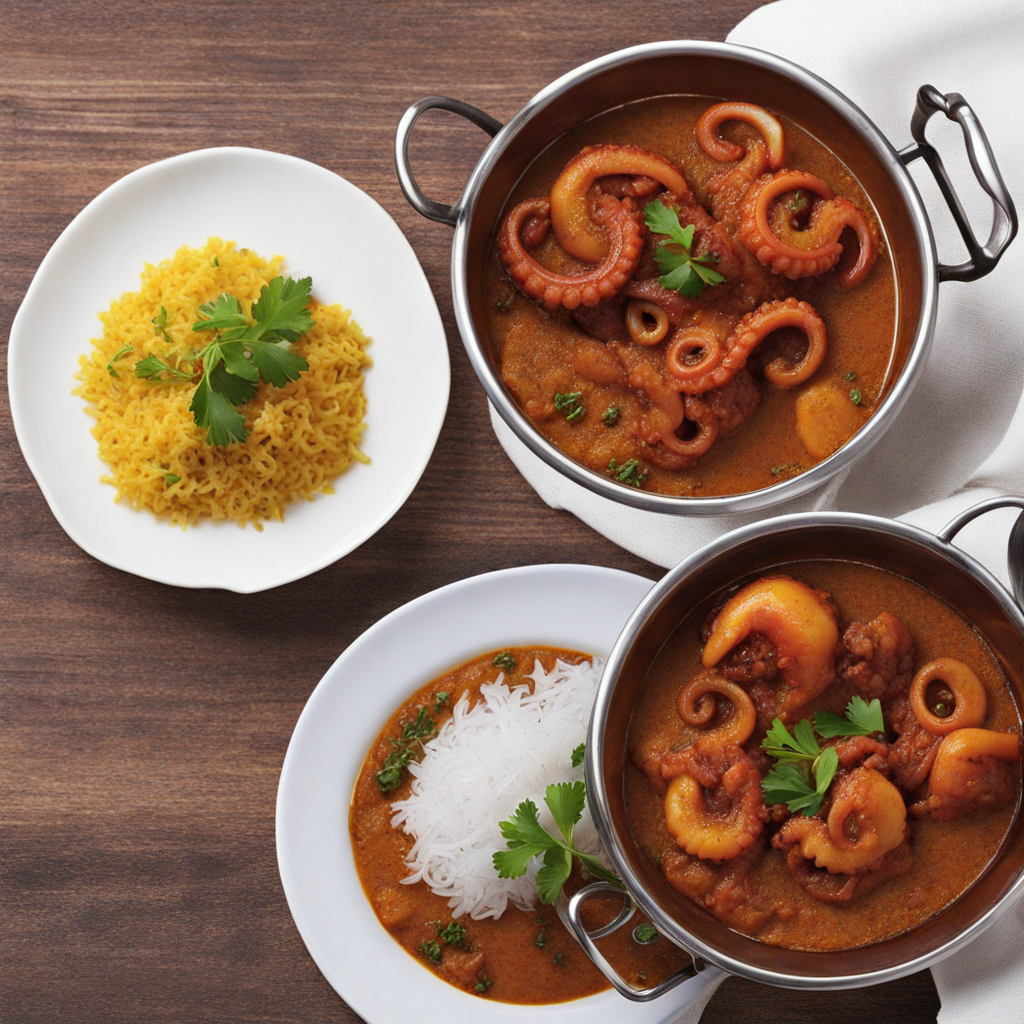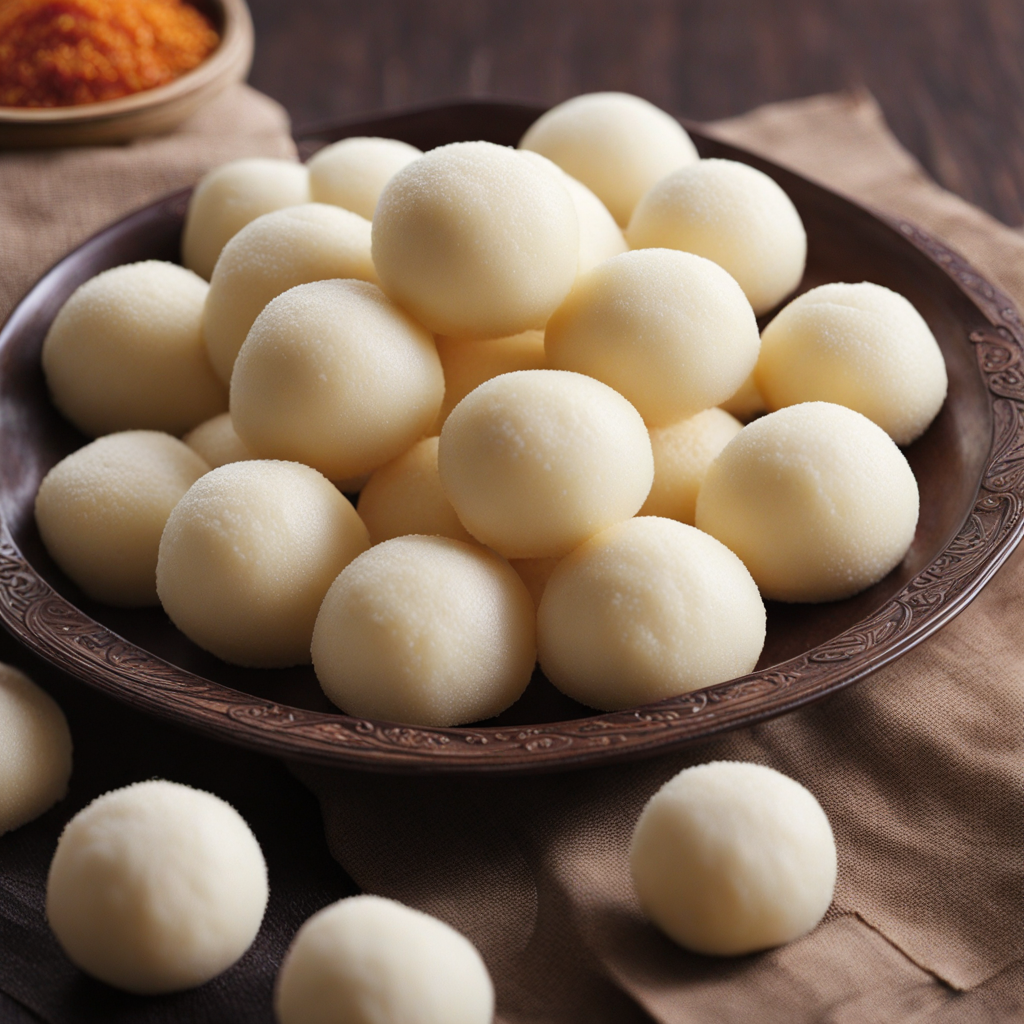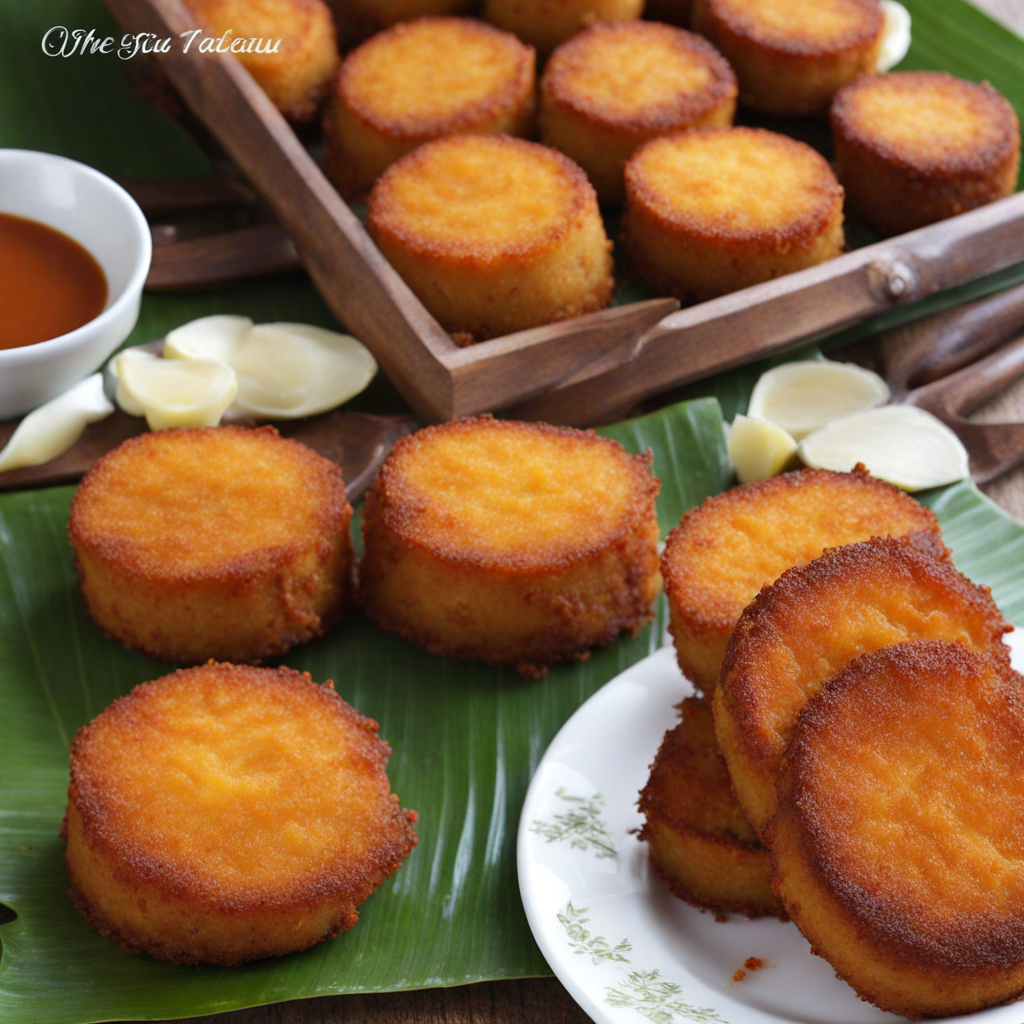Octopus Curry
Octopus Curry is a vibrant and flavorful dish that showcases the unique culinary heritage of Mauritius. This island nation, known for its diverse cultural influences, combines Creole, Indian, and French flavors to create a truly distinctive dish. The octopus is tenderized and slow-cooked in a rich and aromatic curry sauce, which is often enriched with a blend of spices such as turmeric, cumin, and coriander. The result is a beautifully colored sauce that envelops the succulent pieces of octopus, making each bite an explosion of flavor that dances on the palate. The addition of fresh ingredients such as tomatoes, onions, and garlic enhances the curry's depth, while coconut milk adds a creamy texture that balances the spices. The octopus itself has a delicate, slightly sweet flavor that pairs perfectly with the tangy and fragrant sauce. Served with a side of fluffy rice or traditional flatbreads, Octopus Curry is not just a meal; it’s an experience that transports you to the bustling markets and colorful streets of Mauritius, where food is celebrated as a way of life. One of the most delightful aspects of Octopus Curry is its versatility. It can be adjusted to suit individual tastes, whether you prefer a milder dish or one with a fiery kick. The dish often garnished with fresh herbs like cilantro or curry leaves, adds a fresh brightness that contrasts beautifully with the rich, warm flavors of the curry. As you savor each spoonful, you'll appreciate the skill and passion that goes into this Mauritian specialty, making it a must-try for anyone looking to explore new and exciting culinary landscapes.
How It Became This Dish
A Culinary Journey: The History of Kalimarse Kari from Mauritius #### Introduction Kalimarse Kari, a delectable dish from the island nation of Mauritius, encapsulates the island's vibrant cultural tapestry and its rich culinary heritage. This unique curry, often made with a blend of seafood such as fish or prawns, showcases the fusion of flavors that characterizes Mauritian cuisine—an amalgamation of influences from Indian, African, Chinese, and French culinary traditions. The history of Kalimarse Kari is not just a tale of ingredients but also a reflection of the island's social and cultural evolution. #### Origin of Kalimarse Kari The origins of Kalimarse Kari can be traced back to the early 18th century when the French colonized Mauritius. The island, uninhabited prior to European arrival, was strategically located along trade routes, attracting settlers and traders from different parts of the world. The French brought with them their culinary practices, which included the use of spices and techniques that would later blend with local ingredients and other global influences. The term "Kalimarse" itself refers to a type of fish, commonly known as "mullet," that is abundant in Mauritian waters. The preparation of Kalimarse Kari typically involves cooking this fish in a rich curry sauce infused with a medley of spices, tomatoes, onions, and sometimes coconut milk. The dish encapsulates the island's bountiful marine resources and the importance of fishing in the local economy. #### Cultural Significance Kalimarse Kari is more than just a meal; it holds a special place in Mauritian culture and is often associated with community gatherings and celebrations. The dish is frequently served during family feasts, weddings, and religious festivals, symbolizing unity and togetherness. The preparation of Kalimarse Kari is often a communal activity, where family members come together to cook, share stories, and enjoy the flavors of their heritage. In a broader cultural context, Kalimarse Kari embodies the Mauritian identity—a reflection of the island's multicultural society. With its diverse population comprising Creole, Indian, Chinese, and European communities, Mauritian cuisine, including Kalimarse Kari, is a testament to the island's history of migration and cultural exchange. Each community has contributed to the dish's evolution, incorporating their unique spices, cooking techniques, and flavor profiles. #### Development Over Time As Mauritius transitioned from a French colony to a British colony in the 19th century, the culinary landscape continued to evolve. The British influence introduced new ingredients and cooking methods, which were absorbed into the local cuisine. Kalimarse Kari adapted to these changes, with variations emerging that showcased the island's adaptability and innovation in the kitchen. The post-colonial era saw a resurgence of interest in traditional Mauritian dishes, as a wave of nationalism swept through the island. With independence in 1968, Mauritians began to take pride in their culinary heritage, and dishes like Kalimarse Kari gained recognition both locally and internationally. The rise of tourism in the late 20th century further popularized Mauritian cuisine, with visitors eager to experience the island's unique flavors. Restaurants began to feature Kalimarse Kari prominently on their menus, showcasing the dish's authenticity and cultural significance. In recent years, the global culinary landscape has witnessed a growing appreciation for ethnic foods, and Kalimarse Kari has found its way onto the international stage. Chefs in Mauritius and abroad have started to experiment with the dish, incorporating modern techniques while maintaining its traditional roots. Fusion variations of Kalimarse Kari have emerged, blending it with other culinary influences, such as Thai or Mediterranean flavors, appealing to a wider audience. #### Ingredients and Preparation The core ingredients of Kalimarse Kari reflect the island's abundant natural resources. Freshly caught Kalimarse fish is the star of the dish, often marinated with turmeric, salt, and lime for enhanced flavor. The curry base typically consists of onions, garlic, ginger, and a variety of spices, such as cumin, coriander, and chili peppers, which are sautéed to create a fragrant aroma. The cooking process involves simmering the fish in the spice-infused sauce until tender, allowing the flavors to meld beautifully. Some variations incorporate coconut milk, giving the dish a creamy texture and a hint of sweetness that balances the spices. Kalimarse Kari is usually served with rice, lentils, and a side of pickles or chutneys, enhancing the overall dining experience. #### Conclusion Kalimarse Kari is a dish that tells the story of Mauritius—a land shaped by its diverse cultures, rich traditions, and the confluence of flavors. As it continues to evolve, it remains a cherished part of the island's culinary identity, symbolizing the resilience and creativity of its people. Whether enjoyed at a family gathering or a bustling restaurant, Kalimarse Kari serves as a reminder of the island's rich history and the beautiful tapestry of influences that have come together to create something truly special. In a world increasingly inclined toward globalization, the essence of Kalimarse Kari and other traditional dishes is vital in preserving cultural heritage. As locals and visitors alike savor its robust flavors, they contribute to the ongoing story of this remarkable dish—one that is steeped in history and vibrant with the spirit of Mauritius.
You may like
Discover local flavors from Mauritius







